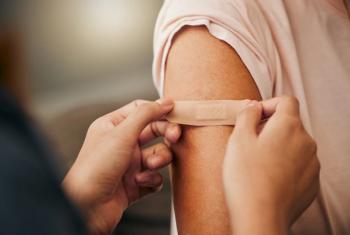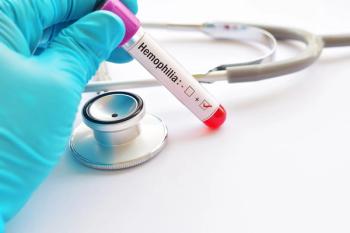
AAP announces revisions to clinical guidelines for hyperbilirubinemia treatment in infants
Hyperbilirubinemia can lead to brain complications in rare instances, which the guidelines work to prevent.
The American Academy of Pediatrics (AAP) has announced revisions to the clinical guidelines for treating infants with hyperbilirubinemia who are born 35 weeks or more into pregnancy. Hyperbilirubinemia most often leads to jaundice, a condition where the skin and whites of the eyes take on a yellow appearance. However, symptoms are sometimes more severe, leading to complications in the brain.
Chair of the guideline authoring committee Alex R. Kemper, MD, MPH, MS, FAAP, discussed the importance of hospitals and clinicians having plans to help prevent hyperbilirubinemia in newborns.
One of these plans was to measure bilirubin levels in babies. High levels of bilirubin can lead to a permanent brain condition known as kernicterus, which can cause cerebral palsy and severe movement problems.
“This is why we need to make sure clinicians understand why it is important to test bilirubin levels and for families to understand their babies’ risk and recommended follow-up,” said Kemper.
If a case of hyperbilirubinemia is severe, exchange transfusion can be used as treatment instead. During exchange transfusion, the patient’s blood is rapidly replaced so that bilirubin levels may be lowered. One of the recent revisions made by the AAP suggested using this method less than before, raising the threshold for exchange transfusion along with phototherapy. This change came because of research published in 2004 that implied toxicity is caused in higher levels of bilirubin than initially thought.
“Fortunately, kernicterus is rare, but the impact on children and their families can be devastating,” said Kemper. “The guideline provides clinicians, birthing centers, and hospitals with strategies to prevent the worst-case scenarios and to help educate families so they recognize the signs of jaundice and know when to follow-up with their pediatrician.”
To cause more timely follow ups, the AAP revised the risk assessment approach to suggest the right times for measuring bilirubin levels. This approach is based on the difference between the infant’s bilirubin levels and the phototherapy threshold. The potential harm of phototherapy was a key factor in the development of the AAP’s guidelines.
These new findings were included in the “Clinical Practice Guideline Revision: Management of Hyperbilirubinemia in the Newborn Infant 35 or More Weeks of Gestation,” which will be published in the September 2022 issue of Pediatrics. This issue was published online August 5, 2022.
Reference
American Academy of Pediatrics revises clinical guidelines for preventing, treating, and monitoring hyperbilirubinemia in newborns. August 5, 2022. Accessed August 5, 2022.
Newsletter
Access practical, evidence-based guidance to support better care for our youngest patients. Join our email list for the latest clinical updates.











